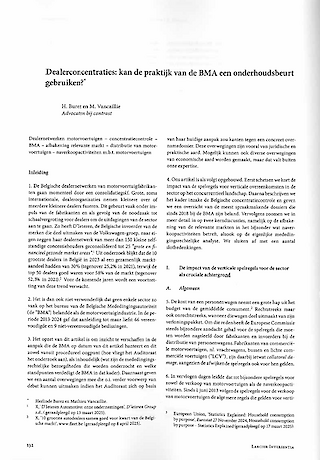Privacy Talk
The use of surveillance cameras in your company.
What you need to know.
Companies are increasingly using cameras for the identification of visitors, to secure their premises and to monitor employees. A video door-phone or camera that merely serves to identify a visitor falls within the scope of the GDPR (see GDPR toolkit). When you install a surveillance camera at your door entry, you should also take into account the specific rules of the (revised) Belgian camera legislation. Cameras in the workplace are also governed by collective labour agreement no. 68.
Non-compliance with this legislation may result in fines. In Austria, the owner of a sports bar was fined because the surveillance camera installed at his door entry was not sufficiently marked as conducting camera surveillance and also recorded a large part of the sidewalk.
What you need to do.
Since 25 May 2018 you are obliged to notify the police services about your surveillance camera before you begin using it. You can make this notification via a web application of the Federal Public Service for Internal Affairs. This also applies to companies who notified their surveillance camera to the Privacy Commission before 25 May 2018 – this obligation and the public record have been abolished. These companies have until 25 May 2020 to comply with this new obligation.
You should also maintain a “record of image processing activities”. The content of such a record basically corresponds to the content of a record of processing activities, but also includes other information, such as the type of camera and its exact location. A pragmatic approach is to include this information in a separate “security” sheet in your record of processing activities.
The secret use of surveillance cameras is prohibited. You must inform data subjects about your camera surveillance by using the icon prescribed by law. This icon includes the standard phrase “Camera surveillance – Act of 21 March 2007” and also provides the identity of your company and your contact details. Data subjects who pass this icon consent to the camera surveillance.
You can only capture your own premises – the capturing of adjacent premises or public roadways must be kept to a minimum. Your surveillance camera is thus preferably installed at the entrance of your building and not at an entry gate.
You can keep the images up to a maximum of 1 month, unless you need them longer as evidence of a specific offence or damage claim or for identifying a potential offender, victim or witness.
When you install cameras at the workplace, your employees must be informed and consulted (via the works council, the committee for prevention and protection at work or the trade union delegation). If camera surveillance is intended to monitor employees, this cannot be done on a continuous basis, and decisions about and evaluations of employees may not be based solely on these images.
Please consult our website or contact one of our team members if you have questions or require more information:










